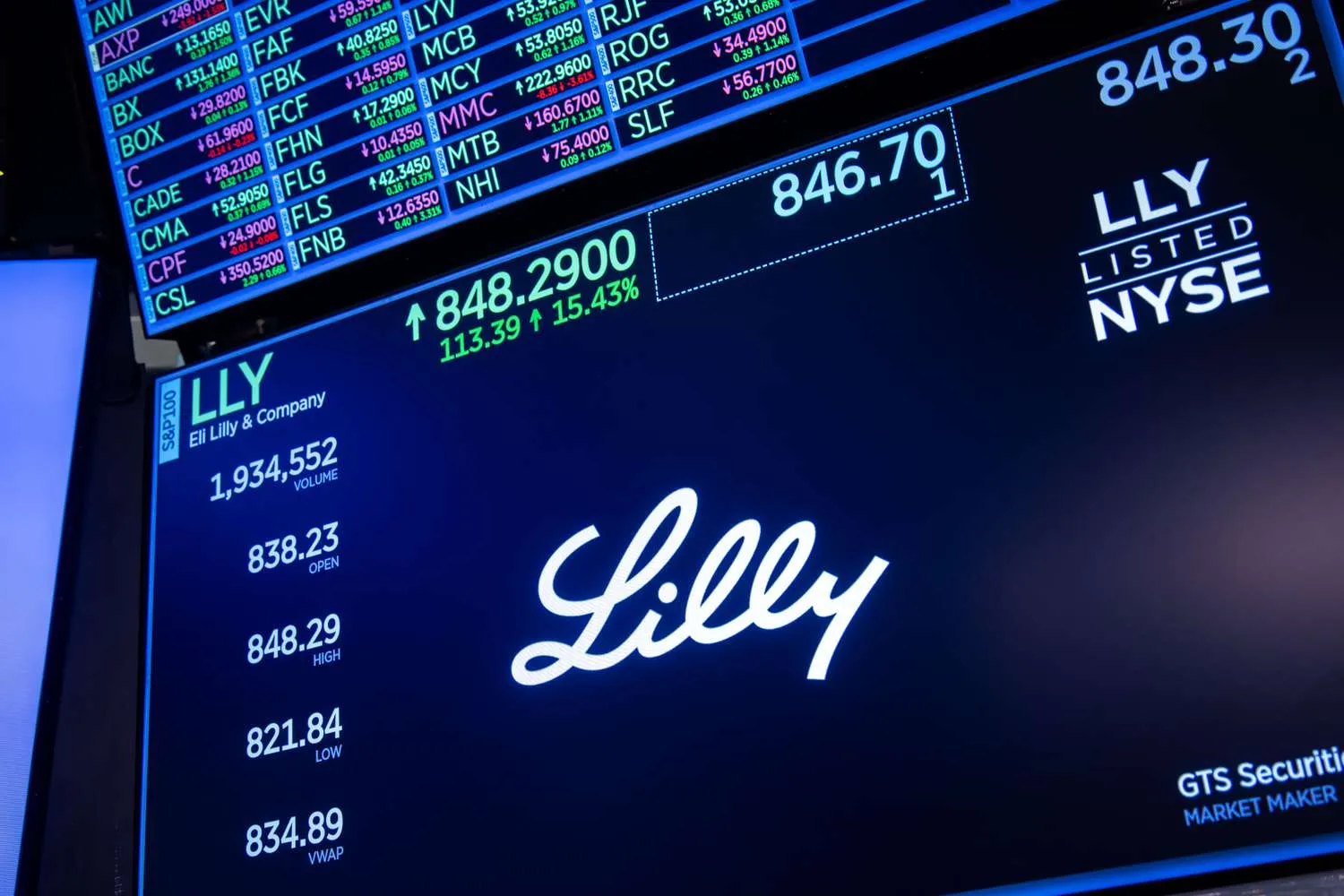Top Stocks to Trade: Eli Lilly (LLY) – Precision Momentum in the Weight-Loss Super-Cycle
Top Stocks to Trade: Eli Lilly (LLY)- Precision Momentum in the Weight-Loss Super-Cycle
1. Why Lilly Is on Every Trader’s Radar
Obesity pharmacology is no longer a slow-burn story—GLP-1 analogues have gone mainstream, and Eli Lilly now owns the conversation. After a brief spring correction, the share price has compressed into a tight flag between ≈ $740 and $800. When a $730 billion company coils like a small-cap, short-term traders pay attention. Fundamental tail-winds remain explosive—first-quarter revenue jumped 45 % year-on-year to $12.73 billion as Zepbound and Mounjaro volumes accelerated.
2. Moats That Matter—And They Matter Right Now
Intellectual-property wall: Tirzepatide (the active in Zepbound/Mounjaro) is patent-protected to 2036, while a next-generation oral GLP-1 portfolio extends exclusivity into the 2040s.
Manufacturing choke-points: Two wholly-owned, high-throughput peptide plants in the U.S. and Ireland allow Lilly to scale faster than contract peers; rivals are scrambling for capacity.
Payor and DTC leverage: With FDA-declared shortages officially over, compounded knock-offs were banned in May, forcing cash-paying patients toward LillyDirect’s $499 monthly plan
Pipeline adjacency: Early-stage amylin analogue eloralintide delivered 11 % weight loss in twelve weeks—best-in-class among amylin competitors and a credible successor combo with tirzepatide
These moats aren’t abstract: they translate directly into street models that now pencil in $58–61 billion topline for FY-25, up from $45 billion in 2024
3. Live Catalysts over the Next Six Weeks
ADA Conference (June 28-30): Full eloralintide dataset and longer-term tirzepatide cardiovascular read-outs hit the tape.
Dose-expansion launch (Aug 5): 12.5 mg and 15 mg Zepbound pens roll out through LillyDirect; management has guided to a steep ARPU step-up.
Q2 earnings (early August): Sell-side expects a 24 % sequential GLP-1 revenue jump; a capacity-utilisation beat could reset guidance higher.
Alzheimer’s co-diagnosis decision: CMS clarification on coverage for Amyvid companion testing is due mid-July and would free another $1-2 billion TAM.
Each event lands inside a 45-day window—ideal for a defined-duration swing trade.
4. Chartcraft: Reading the Tape
Price structure: Since bottoming near $700 on 10 May, LLY has carved a textbook cup-and-handle. The handle spans roughly 4 % depth, well inside classical norms.
Volume pattern: Weekly volume has contracted 30 % from April peaks, signalling supply exhaustion ahead of potential breakout—precisely what technicians look for in a volatility-squeeze.
Support/resistance pivots: Heavy volume-at-price bars stack between $710 and $730; this zone doubles as the 50-day EMA cluster and provides a clean line-in-the-sand.
Momentum gauges: Daily RSI reset to sub-50 in early June and is now curling higher; MACD histogram crossed positive for the first time in three weeks.
Taken together, the technicals argue for asymmetric upside: risk is concentrated in a 3-4 % band below current price, while measured-move projections target $860-$880 by late July.
5. Crafting the Trade Without a Spreadsheet
Think in conditional statements rather than rigid check-boxes:
Trigger: An hourly close above the handle rim (≈ $785) accompanied by ≥ 40 % uptick in 30-minute volume.
Risk anchor: If price settles < $698 on a closing basis—or if ADA data fail to impress—scrap the thesis quickly; that level sits under both VWAP and the prior breakout pivot.
Profit zone: The height of the cup (~ $80) stacked atop the breakout line projects to ≈ $860. Remember: in explosive pharmas, targets are zones, not single prints.
Optional hedge: A small August $650/$630 put spread caps catastrophic gap risk for pennies on the dollar.
6. What Could Go Wrong?
Regulatory curve-balls: The FDA could impose Risk-Evaluation Mitigation Strategies (REMS) on thyroid-tumour warnings. Probabilistically low, but keep a news-alert bot running.
Competitive surprise: Novo Nordisk’s oral semaglutide follow-up might dazzle. Yet each 1 % shift in GLP-1 share dents Lilly’s 2026 revenue by only ~US $860 million—not thesis-breaking.
Macro shocks: Lilly’s beta is 0.79; broad-market meltdowns transmit only partially, but maintaining SPY puts during earnings season is prudent for capital-efficiency traders.
7. The Short-Term Verdict
Eli Lilly is a rare case where giant-cap fundamentals and small-cap technical compression intersect. Breakout probability is amplified by a dense calendar of catalyst flow and a vacuum of immediate competitive threats. Traders willing to respect the $698 fail-point gain exposure to a multi-week payoff profile that could add double-digit percentage returns before summer ends.
When price, product, and calendar align, opportunity is seldom polite enough to linger. Lilly is knocking now.



